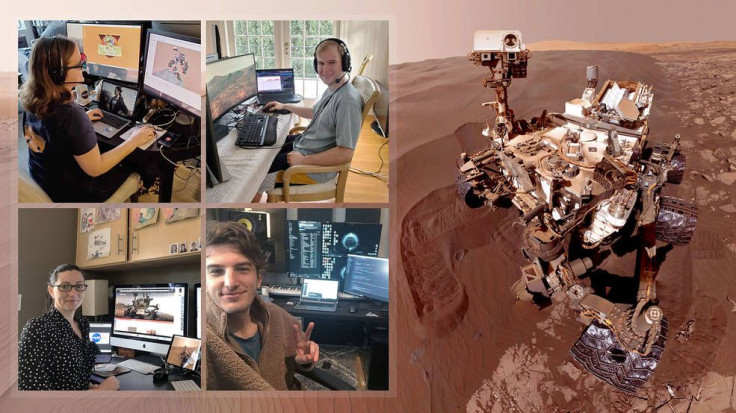This Is How NASA Scientists Pilot Curiosity Mars Rover From Home

KEY POINTS
- NASA explains how the Curiosity team works from home
- Curiosity rover recently drilled on Mars to collect samples
- Team members use simple 3D glasses to drive the rover around Mars
Members of the team behind Curiosity revealed how they are able to drive NASA’s rover around Mars even though they are currently working from home. According to the team members, they had to deal with a new set of challenges when it came to piloting the rover without NASA’s special instruments.
For the past couple of weeks, employees of NASA have been working remotely from their homes due to the lockdowns and increasing number of COVID-19 cases in the U.S. Despite the current working conditions, NASA employees make sure that they can still complete their tasks for the agency.
This is what members of NASA’s Curiosity team are doing. On March 22, the rover executed another drilling procedure on a location on Mars known as Edinburgh. The goal of the procedure was to collect rock samples from Mars’ subsurface.
Although Curiosity operated normally as it drilled away on Mars, the team behind it was actually working in a totally different setting. Instead of controlling the rover inside NASA’s specialized facilities, the members of the team were working from the comfort of their own homes.
One of the main challenges that the team members encountered when they started working remotely was the lack of access to NASA’s powerful computers. They use these computers to view 3D images of Mars in order to spot every contour and feature of the landscape. This allows them to safely and effectively drive Curiosity across the harsh Martian surface.
As a solution to the issue, Curiosity’s team members switched to using simple red-blue 3D glasses to plan out the rover’s path. Although the glasses are not as accurate and immersive as the ones at NASA’s facility, they can still be used for planning Curiosity’s movements.
Aside from the use of special equipment, the team members have also switched to video conferencing and online messaging for their meetings regarding Curiosity’s mission.
According to Alicia Allbaugh, the leader of the team at NASA’s Jet Propulsion Laboratory, staying constantly in touch even when working from home ensures that vital information is shared with each member.
“We're usually all in one room, sharing screens, images and data. People are talking in small groups and to each other from across the room,” she said in a statement.
© Copyright IBTimes 2024. All rights reserved.




















